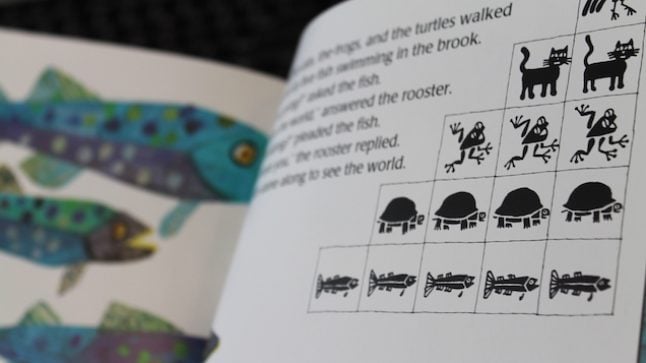Series: Book Ideas
4 Books That Inspire Algebraic Thinking in Young Children

When someone says something like algebra begins in pre-kindergarten (or before), immediately others may begin to question their sanity. But the foundations of algebraic thinking do begin with core concepts that take shape early, such as comparing and ordering objects or patterns and the rules they are governed by.
One of the best ways to delve into these concepts is through the books that are read to children each and every day. Below are some suggestions of books that may inspire you to explore algebraic thinking with your children.
-
Rooster’s Off to See the World by Eric Carle
This “Carle classic” tells the story of a rooster who is slowly joined by two cats, three frogs, four turtles, and so on. As the groups of different types of animals come along for the journey, and eventually leave, it sets up a world of opportunities to delve into number operations and patterns.
-
The Napping House by Audrey Wood
The growing pattern in this fun and wildly illustrative story book can bring out some math moments you never thought would happen with younger children. You might find our Focus on the Lesson video Who is Napping? particularly interesting.
-
Is It Red? Is It Yellow? Is It Blue? by Tana Hoban
A lesser-known book that is both simple and without an actual story to tell, this concept picture book allows children to explore colors, shapes, sizes, and most importantly, relationships. It is another wordless book that encourages an examination of relationships that words themselves often aren’t best in doing with very young children.
-
I Know an Old Lady Who Swallowed a Fly by Mary Ann Hoberman
When an old lady swallows a fly, a problem slowly builds. It is a charmingly silly tale that children get a kick out of. Although it can often result in a simple lesson about not eating just anything, the telling of this folk tale can result in an exploration of a cumulative or growing pattern.